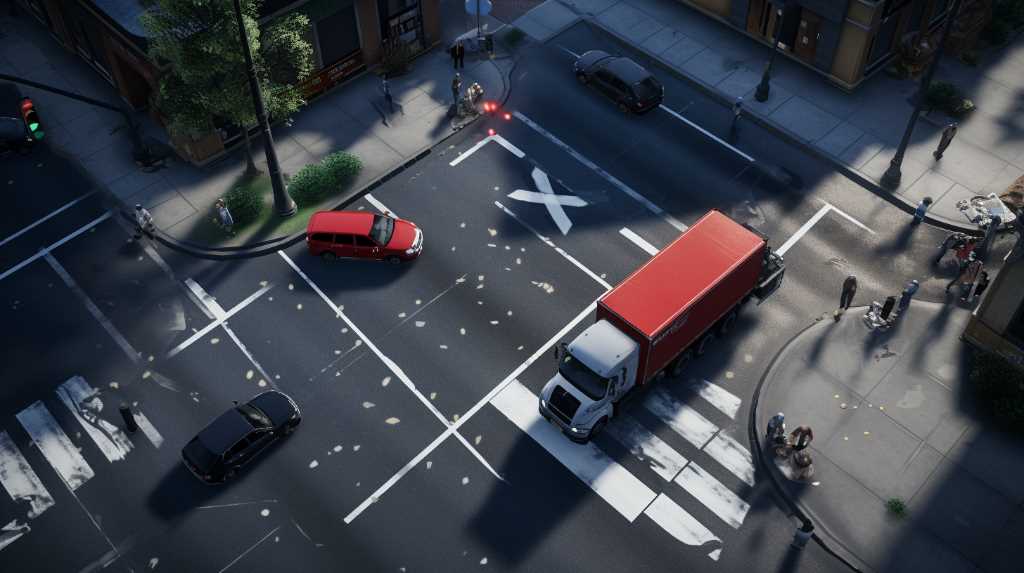
To figure out who is to blame in a truck accident where someone made a left turn, you need to look closely at the traffic rules and what happened at the crash site. Usually, the person who was going straight has the right-of-way, and the one turning left might be responsible if there’s a crash. But each case is different. You have to check things like traffic lights, road signs, how well you can see, and what each driver was doing.
For example, if the driver going straight was speeding or ignored a red light, they might be at fault.
It’s really important to find out if a driver wasn’t being careful. You also need to think about how traffic lights and the road conditions might have played a role. To figure out who should be blamed, you need to collect proof from the crash, like what witnesses say and any video that might exist. This way, you can be sure about who was at fault in these tricky left-turn truck accidents.
Understanding Right-of-Way Rules
Although right-of-way rules may vary slightly by jurisdiction, they consistently dictate that drivers making a left turn must yield to oncoming traffic that is proceeding straight through an intersection. This principle is deeply rooted in traffic law to prevent collisions and ensure the efficient flow of vehicles.
When assessing fault in a left-turn truck accident, these rules are scrutinized alongside factors such as signal status, signage, visibility, and the actions of both drivers leading up to the collision. The analytical approach to determining liability involves a methodical examination of these elements, often incorporating witness statements, traffic camera footage, and accident reconstruction.
Ultimately, the driver who failed to adhere to the established right-of-way is typically found at fault, barring exceptional circumstances or mitigating factors.
Analyzing Left-Turn Scenarios
When looking into left-turn accidents involving trucks, it’s important to carefully check what happened to see if any traffic rules were broken, which may have caused the crash. This deep look includes checking the traffic lights, signs, and road lines that were there when the crash happened.
It’s important to look at whether the truck driver followed rules like giving way to others and using signals, as well as how fast and where the other cars were. Also, things like the weather, how well drivers could see, and the condition of the road might have been big factors.
Identifying Driver Negligence
Determining driver negligence in a left-turn truck collision involves scrutinizing the truck operator’s adherence to traffic laws and the attentiveness of all involved drivers. A meticulous examination of the incident is critical, focusing on whether the truck driver executed the turn with proper signaling and yielded to oncoming traffic as mandated by law.
Evaluating the actions of the other driver is also essential; this includes assessing their speed, right-of-way, and reaction time. Negligence may be established if there is clear evidence of traffic violations, such as failing to obey traffic signals or signs, or engaging in distracted driving.
Furthermore, the analysis must consider environmental factors and potential vehicle malfunctions that could have contributed to the collision, ensuring a comprehensive and impartial determination of fault.
Evaluating Traffic Signal Impact
Evaluating the role of traffic signals is paramount in ascertaining responsibility in left-turn truck accidents. These controls significantly influence driver decisions and actions at intersections.
An analytical approach must be taken to determine if the traffic signals were functioning correctly at the time of the collision. Detailed analysis includes reviewing signal timing, visibility, and compliance with traffic laws.
In cases where signals may have malfunctioned, or their instructions were ambiguous, fault may be attributed to the party responsible for the maintenance of traffic control devices.
Moreover, objective consideration is given to whether a driver misinterpreted the signals due to inattention or misjudgment. Such an evaluation requires precise evidence, often gathered from traffic cameras, eyewitness accounts, and accident reconstruction experts.
Gathering and Interpreting Evidence
In investigating truck accidents where a left turn was involved, it’s very important to collect and understand evidence to figure out who is at fault. Investigators need to gather all the physical evidence they can, like tire marks, any damage to the vehicles, and what the road was like. Taking photos and measurements at the accident scene helps piece together what happened.
Listening to what witnesses say is also important because they might support or question what the drivers say happened. Also, information from the truck’s GPS and electronic logs can tell us things like how fast the truck was going, how the driver braked, and if they were following the rules about driving hours.
Lawyers look at all these details alongside traffic laws to decide who caused the accident.
Conclusion
To find out who is to blame in a truck accident where someone was making a left turn, it’s important to look closely at several things.
First, we need to check who had the right to go first, according to the road rules.
We also need to look at exactly how the turn was made, whether the drivers were paying attention and following the law, and if traffic lights played a part.
We have to carefully check all the proof, like what witnesses said, videos from traffic cameras, and how the vehicles got damaged.
By doing this thorough check, we can figure out who was at fault. Then, that person or company can be held responsible, which is fair and follows the rules of the road and the idea that you shouldn’t be careless.